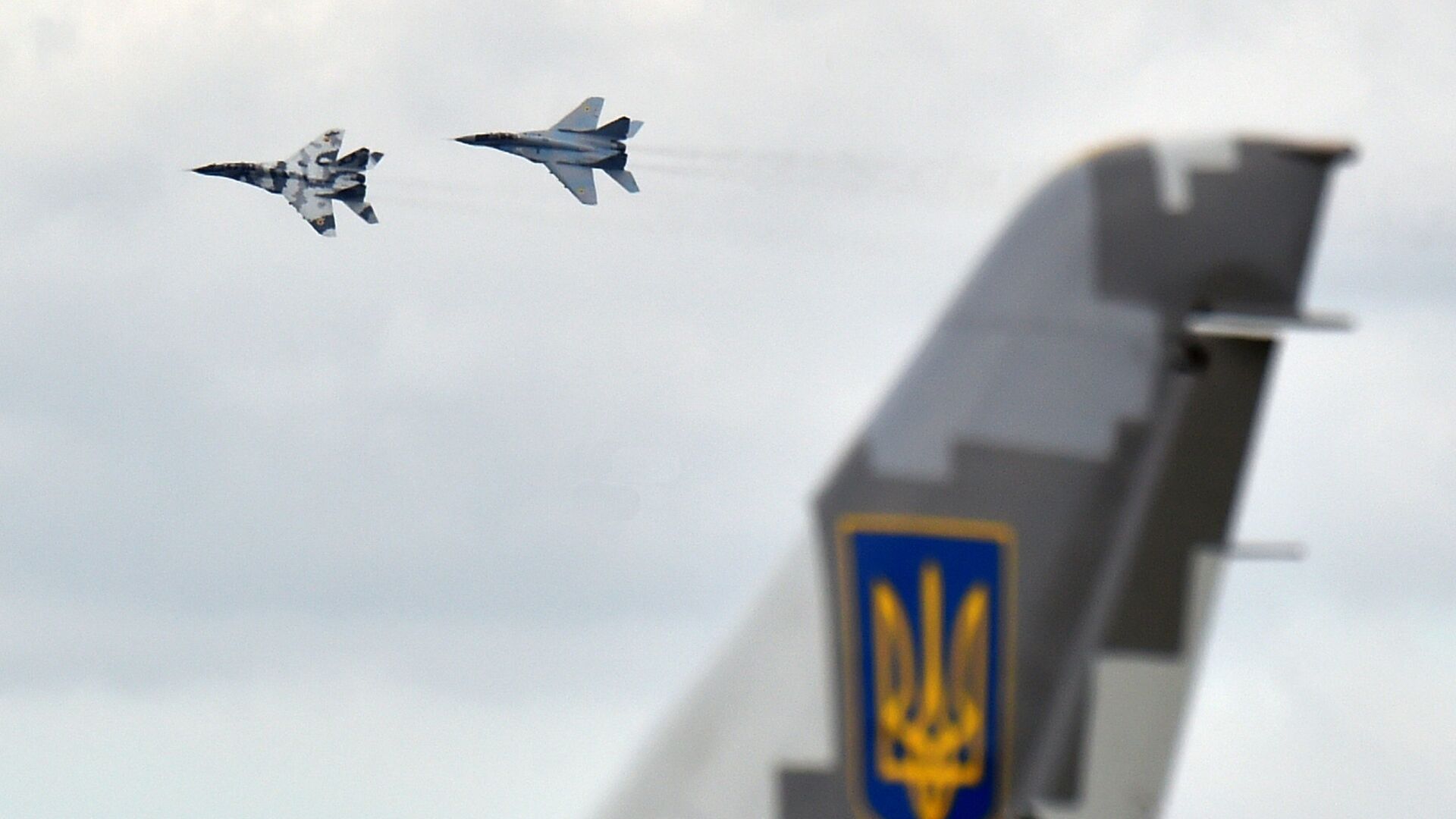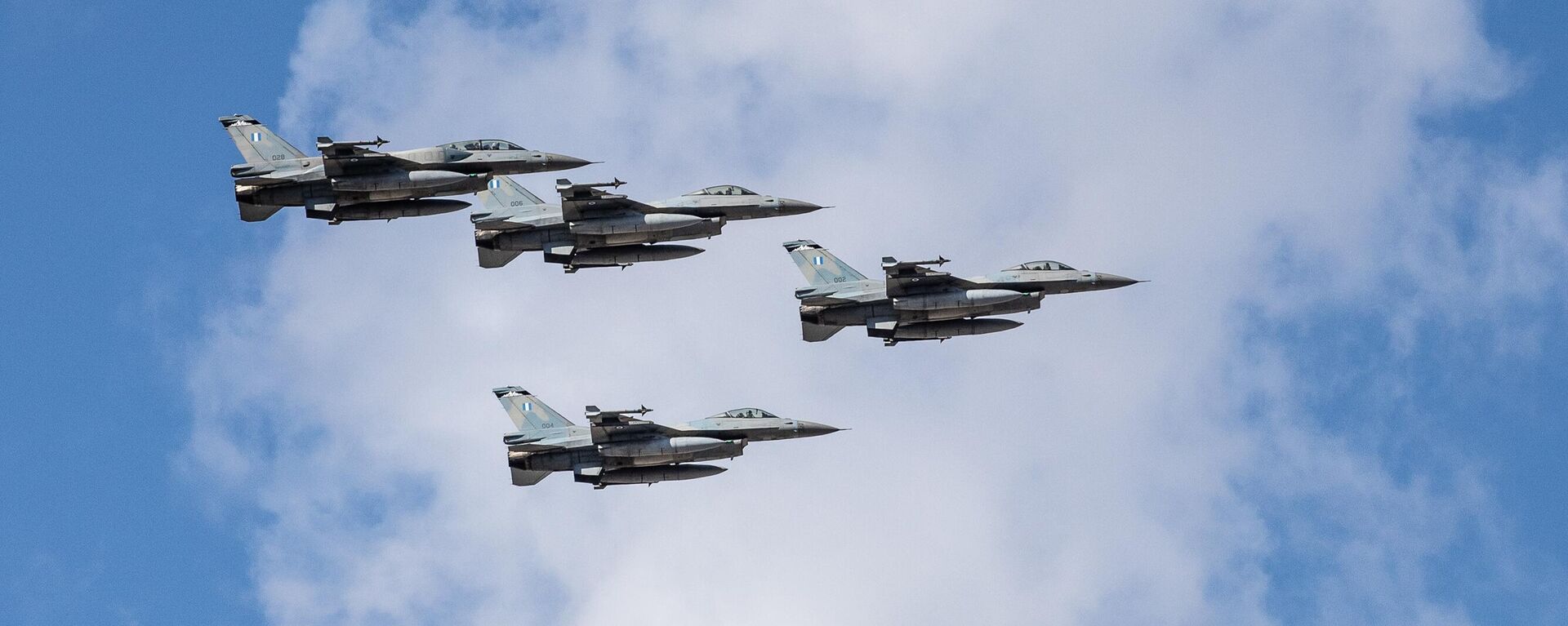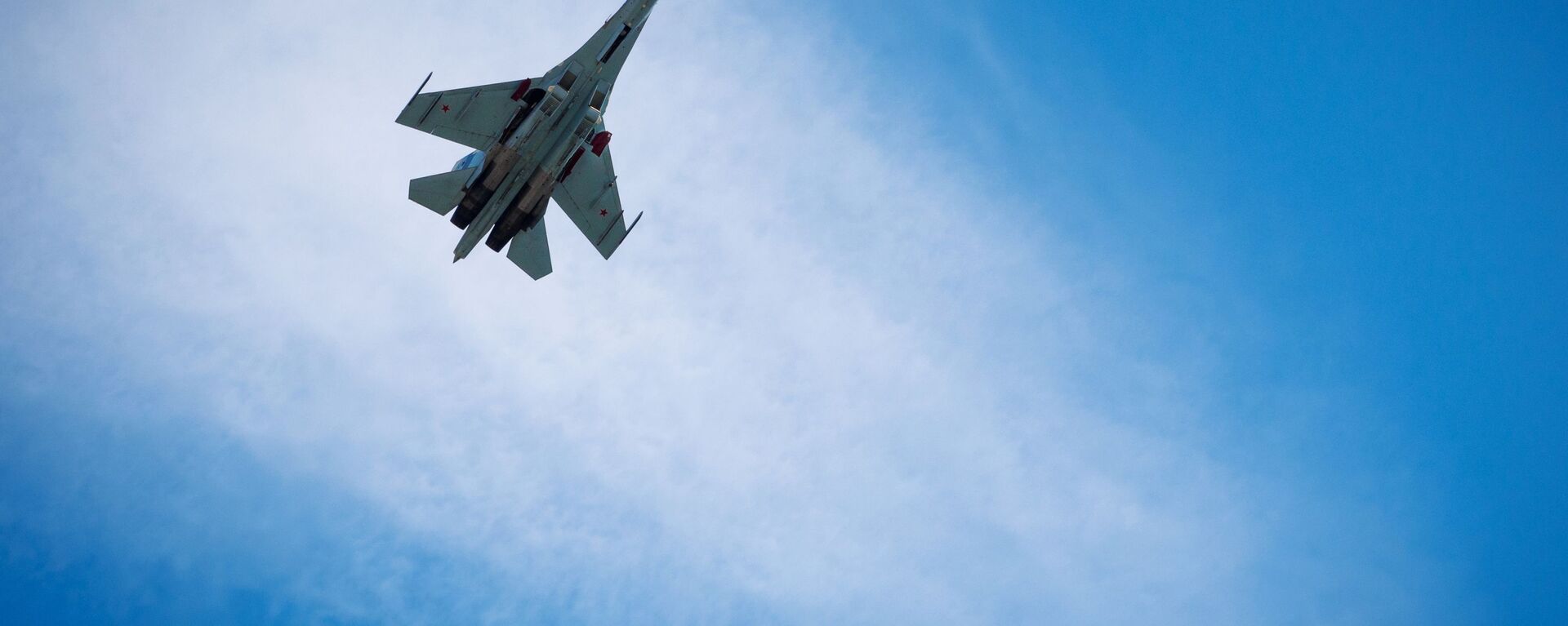https://sputnikglobe.com/20230414/polish-and-slovak-mig-29s-wont-turn-tide-in-ukraine-1109538682.html
Polish and Slovak MiG-29s Won't Turn Tide in Ukraine
Polish and Slovak MiG-29s Won't Turn Tide in Ukraine
Sputnik International
Germany approved the re-export of five Polish Soviet-designed MiG-29 fighter jets from former East German military stocks to the Kiev regime ahead of its much-discussed spring offensive.
2023-04-14T18:21+0000
2023-04-14T18:21+0000
2023-04-14T18:21+0000
ukraine
analysis
opinion
us
europe
poland
f-16
mig-29
mig-29
joe biden
https://cdn1.img.sputnikglobe.com/img/104808/67/1048086796_0:193:2201:1431_1920x0_80_0_0_1ca7c7286be3c400b418230ac71d70eb.jpg
"I think that Poland will not send normal, working aircraft to Ukraine, because Poland, in principle, is not particularly interested, in my opinion, in the victory of the Ukrainian regime, because it is more interested in the loss of Ukraine in order to later (...) try to seize the western territories [of Ukraine – Sputnik]," Evgeny Mikhailov, a Russian military expert and political observer, told Sputnik. The Mikoyan MiG-29 was designed in the Soviet Union in 1974 as an air superiority fighter to counter the McDonnell Douglas F-15 Eagle. The first MiG-29s became operational in 1982 being codenamed "Fulcrums" by NATO. Western military observers lauded the MiG-29 for "super-maneuverability", adding that following the reunification of Germany, Western pilots had a unique opportunity to fly and test MiG-29s. Moreover, the United States reportedly bought a whopping 21 MiGs from Moldova in November 1997.The problem is that the warplanes weren't properly maintained after the NATO bloc absorbed the former Warsaw Pact Moscow allies, according to Dmitry Drozdenko, editor-in-chief of the Russian military journal Arsenal of the Fatherland. As per him, Warsaw used to violate service agreements following the USSR's collapse.According to Drozdenko, there is yet another problem related to the concept of the "end user certificate" which means that the country that buys weapons, gives a guarantee that there won't be further transfer of these weapons to other countries. This concept is applied to controlling conventional weapons in the world.Given that Russia is the legal successor of the USSR, Germany ought to request Russia's permission to hand over its weapons to Poland, and Poland had to do the same for the transferral of the aircraft to Ukraine, according to the military expert.Warsaw's Goals: Make Money, Wage War & Harm RussiaPoland and Slovakia are two NATO member states which agreed to donate their legacy MiG-29 jets to the Ukrainian air force. On March 17, Bratislava signaled that it would deliver 13 out-of-commission MiG-29s to Kiev. The Slovakian leadership had reportedly transferred the first batch of four fighter jets by March 24.Warsaw's "generosity" largely stems from the Duda government's PR effort with regard to Poland's support for Ukraine, noted Mikhailov. He has drawn attention to the fact that Duda and the Polish military want to get US-made General Dynamics F-16 Fighting Falcons and other modern military equipment in return. That is, one should not delude oneself into believing that Warsaw's move is a gesture of goodwill. In addition, Poles want to become Washington's major military stronghold in Europe, said Mikhailov, adding that the country has already turned into a hub for weaponry transferals.Could MiGs Upset Battlefield Balance?Sputnik's interlocutors expect that the donated aircraft will take off from the territory of Ukraine. The Kiev regime has pilots, service specialists and infrastructure to exploit the warplanes.At the same time, one should bear in mind that at the beginning of the special military operation which was launched on February 24, the Russian Armed Forces destroyed most of the military airfields in those territories where they planned to enter. Still, some airfields have been preserved in the Kherson, Sumy and Dnepropetrovsk regions, according to Mikhailov. Nonetheless, it's unlikely that Ukraine's MiGs will be able to take off and land directly in the combat zone where they could be destroyed by Russia's air defenses.In addition, there are certain problems with maintenance of the Ukrainian army's military equipment due to the fact that Russia has destroyed and continues to destroy the Kiev regime's workshops, both in Kharkov and in Dnepropetrovsk, as well as in other cities that are close to the region of hostilities, according to the political observer. Meanwhile, the Kiev regime is striving to get US-made F-16s. Reports emerged that some Ukrainian pilots were even tested to operate US fighter jets. However, in February, US President Joe Biden made it clear F-16 jets were off the table "for now" for Ukraine.Earlier, US Undersecretary of Defense for Policy Colin Kahl said that Kiev has "at times" asked Washington for up to 128 fourth-generation fighter jets, a mix of F-15, F-18 and F-16 jets. Kahl poured some cold water on Kiev's requests saying that the new production of F-16 jets for the Eastern European state would take three-to-six years to deliver, but hypothetically the United States could deliver older model F-16 jets to Ukraine in two years.
https://sputnikglobe.com/20230316/polands-transfer-of-mig-29s-to-ukraine-does-not-change-us-stance-on-f-16s-white-house-1108479830.html
https://sputnikglobe.com/20230224/wallace-says-nato-allies-could-get-raf-jets-in-return-for-gifting-migs-to-kiev-1107773595.html
https://sputnikglobe.com/20230412/russian-su-27-fighter-escorts-german-patrol-plane-over-baltic-sea-1109446879.html
ukraine
poland
slovakia
Sputnik International
feedback@sputniknews.com
+74956456601
MIA „Rossiya Segodnya“
2023
News
en_EN
Sputnik International
feedback@sputniknews.com
+74956456601
MIA „Rossiya Segodnya“
Sputnik International
feedback@sputniknews.com
+74956456601
MIA „Rossiya Segodnya“
poland mig-29s, germany approved poland mig-29 ukraine, soviet-era mig-29, poland's military aid to ukraine, slovakia mig-29 kiev, bulgaria mig-19 pentagon leak, ukraine spring offensive, ukraine airfields destroyed, ukraine fighter jets, ukraine f-16 jets
poland mig-29s, germany approved poland mig-29 ukraine, soviet-era mig-29, poland's military aid to ukraine, slovakia mig-29 kiev, bulgaria mig-19 pentagon leak, ukraine spring offensive, ukraine airfields destroyed, ukraine fighter jets, ukraine f-16 jets
Polish and Slovak MiG-29s Won't Turn Tide in Ukraine
Germany approved the re-export of five Polish Soviet-designed MiG-29 fighter jets from former East German military stocks to the Kiev regime ahead of its much-discussed spring offensive. Earlier this month, Polish President Andrzej Duda announced that Warsaw had handed over four MiG-29 jets to Ukraine, with four more being delivered.
"I think that Poland will not send normal, working aircraft to Ukraine, because Poland, in principle, is not particularly interested, in my opinion, in the victory of the Ukrainian regime, because it is more interested in the loss of Ukraine in order to later (...) try to seize the western territories [of Ukraine – Sputnik]," Evgeny Mikhailov, a Russian military expert and political observer, told Sputnik.
"I am more than sure that the planes that Poland is transferring are in a very deplorable state (…) We have seen earlier that other countries also handed over planes in almost unusable condition. And I have big doubts that these MiG-29 aircraft will become a game changer for the Ukrainian Armed Forces."
The Mikoyan MiG-29 was designed in the Soviet Union in 1974 as an air superiority fighter to counter the McDonnell Douglas F-15 Eagle. The first MiG-29s became operational in 1982 being codenamed "Fulcrums" by NATO. Western military observers lauded the MiG-29 for "super-maneuverability", adding that following the reunification of Germany, Western pilots had a unique opportunity to fly and test MiG-29s. Moreover, the United States reportedly bought a whopping 21 MiGs from Moldova in November 1997.
The problem is that the warplanes weren't properly maintained after the NATO bloc absorbed the former Warsaw Pact Moscow allies, according to Dmitry Drozdenko, editor-in-chief of the Russian military journal Arsenal of the Fatherland. As per him, Warsaw used to violate service agreements following the USSR's collapse.
"In the countries of the Eastern bloc of the former Warsaw Pact, there were and still are repair enterprises for the maintenance of Soviet equipment, including aviation. Warsaw is no exception," Drozdenko told Sputnik. "The same is true for Bulgaria. Accordingly, after Poland joined NATO this equipment was modernized to the standards of the alliance. What is meant by this? This is the installation of communication systems, the adaptation of weapons systems for NATO ammunition such as guided missiles, for example – some Slovak fighters have been similarly modernized –and this has resulted in the use of anti-radiation missiles (ARM) in the course of the special military operation. That is, the engine maintenance [of Poland's MiGs] was carried out, possibly, with the involvement of some of our design bureaus and enterprises. But that was a long time ago."
According to Drozdenko, there is yet another problem related to the concept of the "end user certificate" which means that the country that buys weapons, gives a guarantee that there won't be further transfer of these weapons to other countries. This concept is applied to controlling conventional weapons in the world.
Given that Russia is the legal successor of the USSR, Germany ought to request Russia's permission to hand over its weapons to Poland, and Poland had to do the same for the transferral of the aircraft to Ukraine, according to the military expert.
"Roughly speaking, not a single country of the NATO bloc complies with these international treaties," said Drozdenko. "And this has been happening for a very long time, even before the special military operation. That is, they spat on international treaties."

24 February 2023, 17:12 GMT
Warsaw's Goals: Make Money, Wage War & Harm Russia
Poland and Slovakia are two NATO member states which agreed to donate their legacy MiG-29 jets to the Ukrainian air force. On March 17,
Bratislava signaled that it would deliver 13 out-of-commission MiG-29s to Kiev. The Slovakian leadership had reportedly transferred the first batch of four fighter jets by March 24.
Judging from the much-discussed "Pentagon leak" Bulgaria allegedly offered to donate its MiG-29s to Kiev, too. However, on April 10, the Bulgarian Ministry of Defense shredded the assumption and asserted to the public that it had not held any talks on the provision of Soviet-era warplanes to Ukraine. "Such a decision would lead to a deficit of capabilities which is contrary to the country’s Constitution," the Bulgarian Ministry of Defense stated.
Warsaw's "generosity" largely stems from the Duda government's PR effort with regard to Poland's support for Ukraine, noted Mikhailov. He has drawn attention to the fact that Duda and the Polish military
want to get US-made General Dynamics F-16 Fighting Falcons and other modern military equipment in return. That is, one should not delude oneself into believing that Warsaw's move is a gesture of goodwill. In addition, Poles want to become Washington's major military stronghold in Europe, said Mikhailov, adding that the country has already turned into a hub for weaponry transferals.
"On the one hand, Poland is seeking to escalate the [Russo-Ukrainian] conflict," echoed Drozdenko. "On the other hand, it's going to sell its weapons very profitably, because it has already put forward the first bill. Not only Poland is doing this, but also some other countries. [Prime Minister of Poland Mateusz] Morawiecki spoke about two billion euros in compensation. The rest has some modesty. Slovakia estimated its transfer at 50% [of the cost of new aircraft], while Poland estimated it at 90%. Warsaw's goals are simple: steadily and invariably inflict damage on Russia, wage war, and make money."
Could MiGs Upset Battlefield Balance?
Sputnik's interlocutors expect that the donated aircraft will take off from the territory of Ukraine. The Kiev regime has pilots, service specialists and infrastructure to exploit the warplanes.
At the same time, one should bear in mind that at the beginning of the special military operation which was launched on February 24, the Russian Armed Forces destroyed most of the military airfields in those territories where they planned to enter. Still, some airfields have been preserved in the Kherson, Sumy and Dnepropetrovsk regions, according to Mikhailov. Nonetheless, it's unlikely that Ukraine's MiGs will be able to take off and land directly in the combat zone where they could be destroyed by Russia's air defenses.
In addition, there are certain problems with maintenance of the Ukrainian army's military equipment due to the fact that Russia has destroyed and continues to destroy the Kiev regime's workshops, both in Kharkov and in Dnepropetrovsk, as well as in other cities that are close to the region of hostilities, according to the political observer.
To cap it off, a few dozen MiGs are unlikely to tip the balance on the battlefield in Kiev's favor, Mikhailov pointed out. According to the Russian Ministry of Defense, Russia has eliminated around 405 warplanes, 228 helicopters and 3,600 drones operated by the Ukrainian Armed Forces since the beginning of the special military operation.
Meanwhile, the Kiev regime is striving to get US-made F-16s. Reports emerged that some Ukrainian pilots were even tested to operate US fighter jets. However, in February, US President Joe Biden made it clear
F-16 jets were off the table "for now" for Ukraine.
Earlier, US Undersecretary of Defense for Policy Colin Kahl said that Kiev has "at times" asked Washington for up to 128 fourth-generation fighter jets, a mix of F-15, F-18 and F-16 jets. Kahl poured some cold water on Kiev's requests saying that the new production of F-16 jets for the Eastern European state would take three-to-six years to deliver, but hypothetically the United States could deliver older model F-16 jets to Ukraine in two years.





